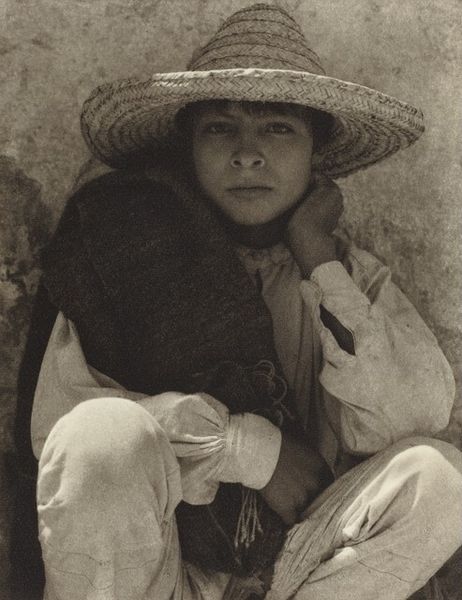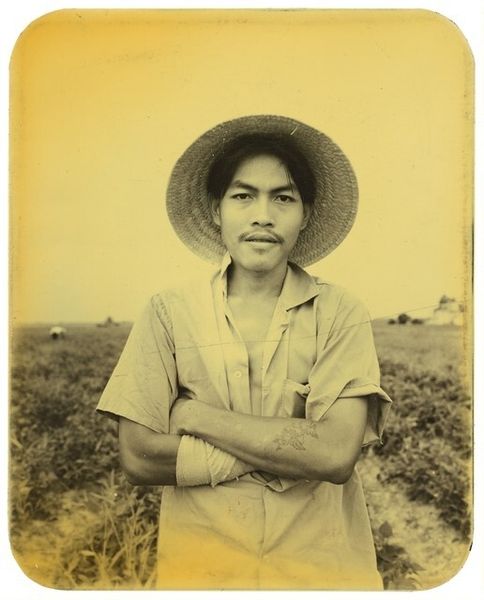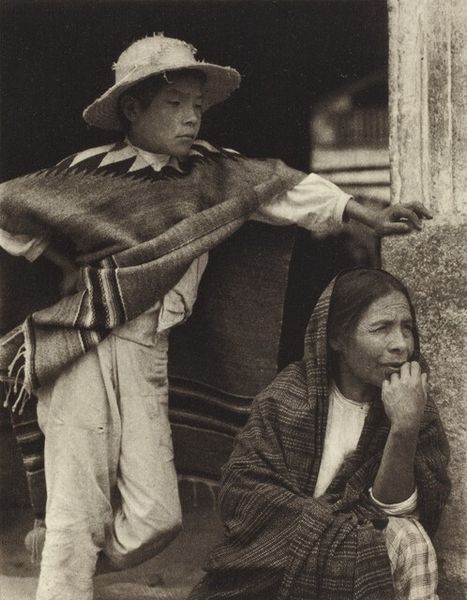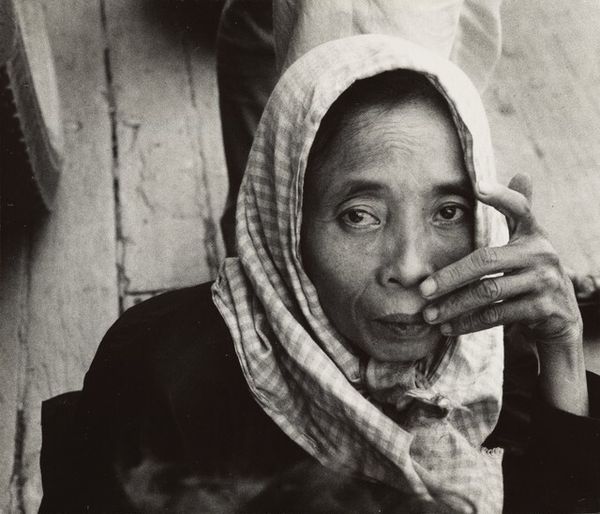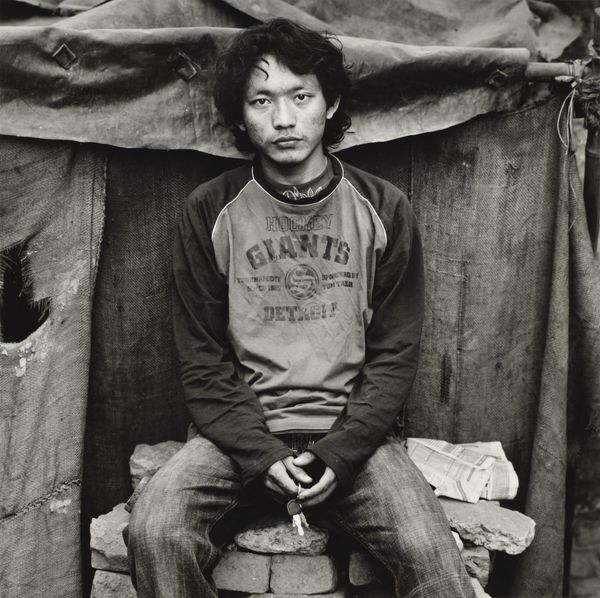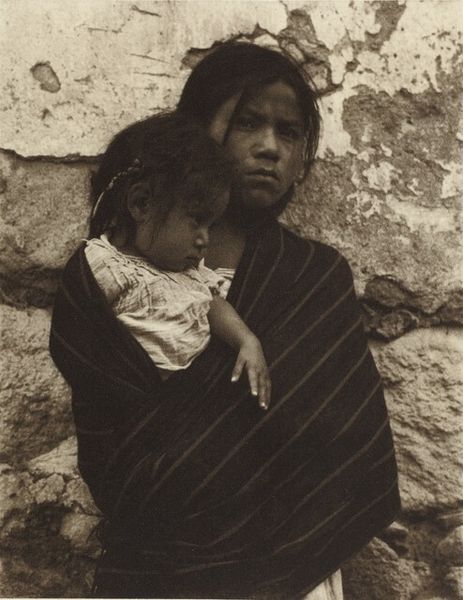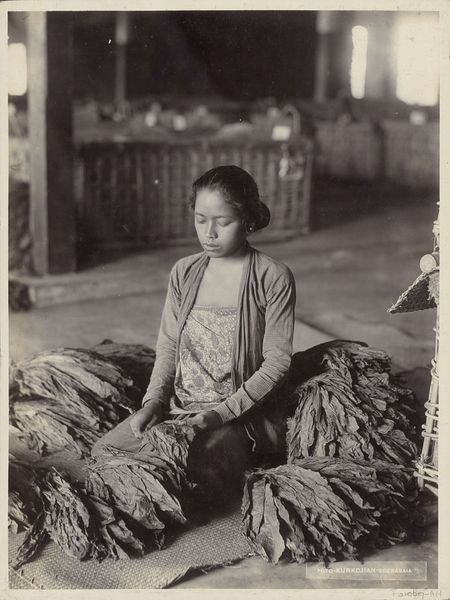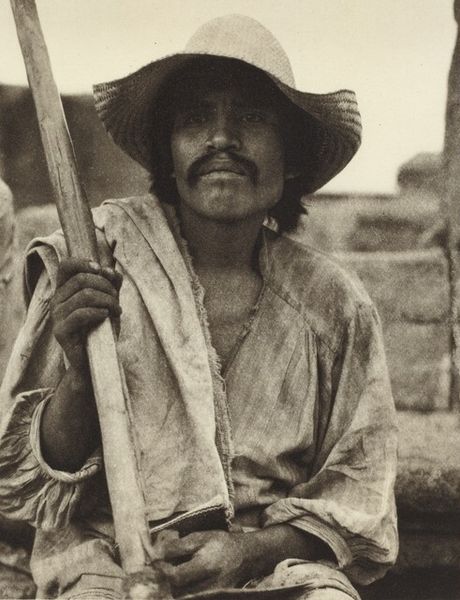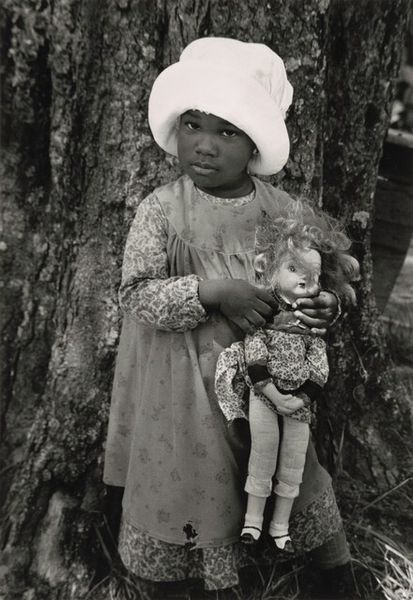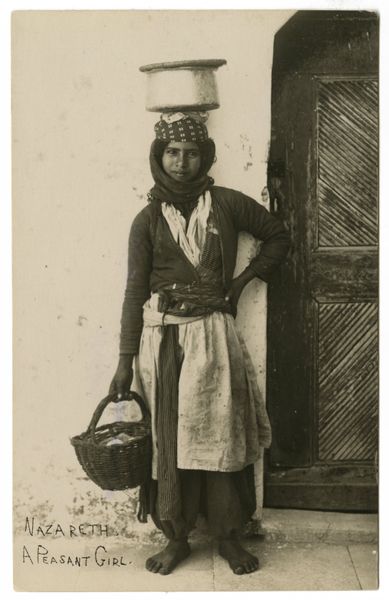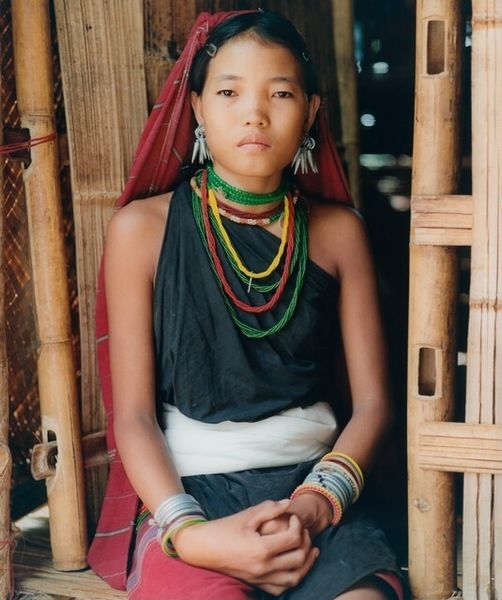
print, photography
#
portrait
#
portrait
# print
#
photography
#
mexican-muralism
#
realism
Dimensions: image: 25.6 x 20.2 cm (10 1/16 x 7 15/16 in.) sheet: 40.3 x 31.4 cm (15 7/8 x 12 3/8 in.)
Copyright: National Gallery of Art: CC0 1.0
Editor: This is Paul Strand's "Boy, Uruapan," a photograph printed sometime between 1933 and 1967. The image has such a heavy, solemn quality to it. I’m curious, what do you see in this piece beyond a simple portrait? Curator: The boy's gaze is undeniably the focal point; it draws us into a shared moment of quiet contemplation, almost melancholy. But let's consider the objects he holds. What does the worn hat signify to you? Editor: Maybe it represents labor or the outdoors… a simpler life, perhaps? I get the impression of traditional values. Curator: Exactly. The hat and the worn wall behind him can represent not just labour, but also tradition, rootedness, and a cultural memory. It is not an easy memory but one imbued with resilience. His posture and expression coupled with those visual symbols, tell a bigger story, don't you think? Editor: Absolutely, I hadn't considered the symbolic weight of the hat. The setting also plays a huge role now that I think about it, it seems to deepen the narrative. It makes the portrait far more complex. Curator: It does. Strand was deeply influenced by the Mexican Muralist movement, which aimed to depict everyday life and struggle. It is clear that Strand evokes empathy by looking to symbolism as an entryway into the narrative. In a sense, the boy *becomes* a symbol. Does knowing that change your understanding of the photograph? Editor: It really does. I’m now thinking about cultural identity and the weight of history, as opposed to seeing only a portrait. Curator: And that’s how a seemingly simple image becomes a powerful cultural document. Editor: It's amazing how a single image, filled with symbols, can hold so much depth.
Comments
No comments
Be the first to comment and join the conversation on the ultimate creative platform.
